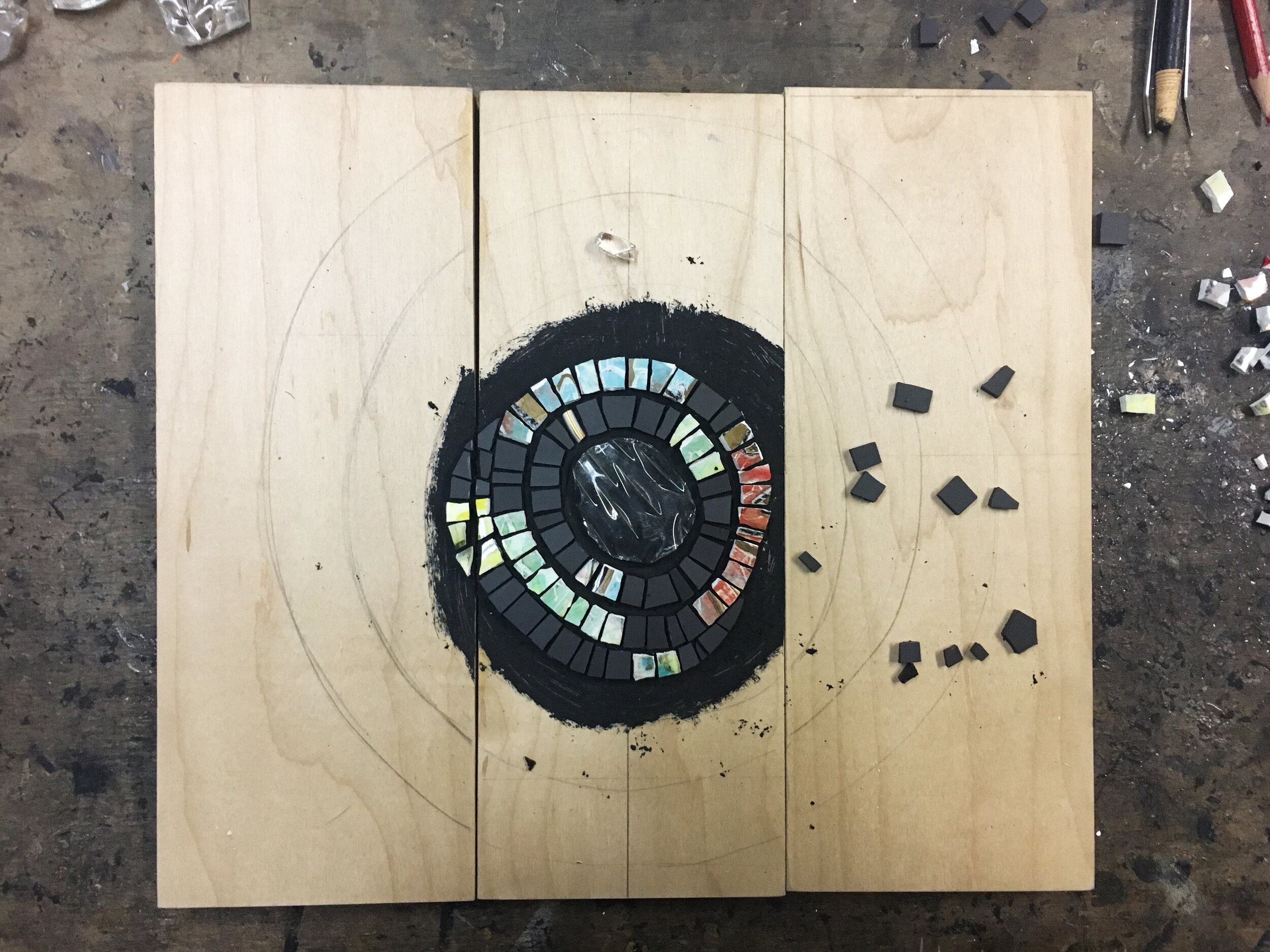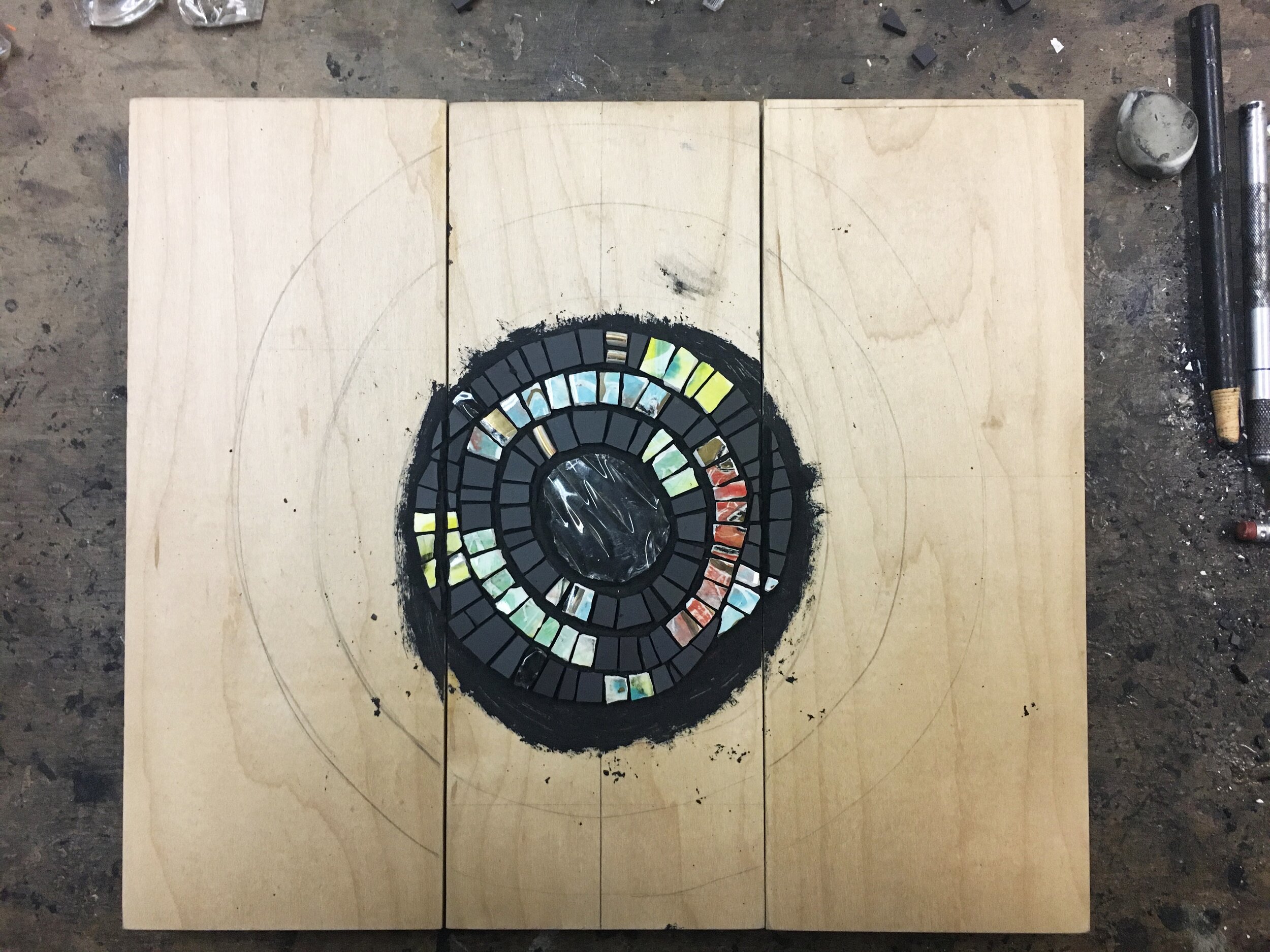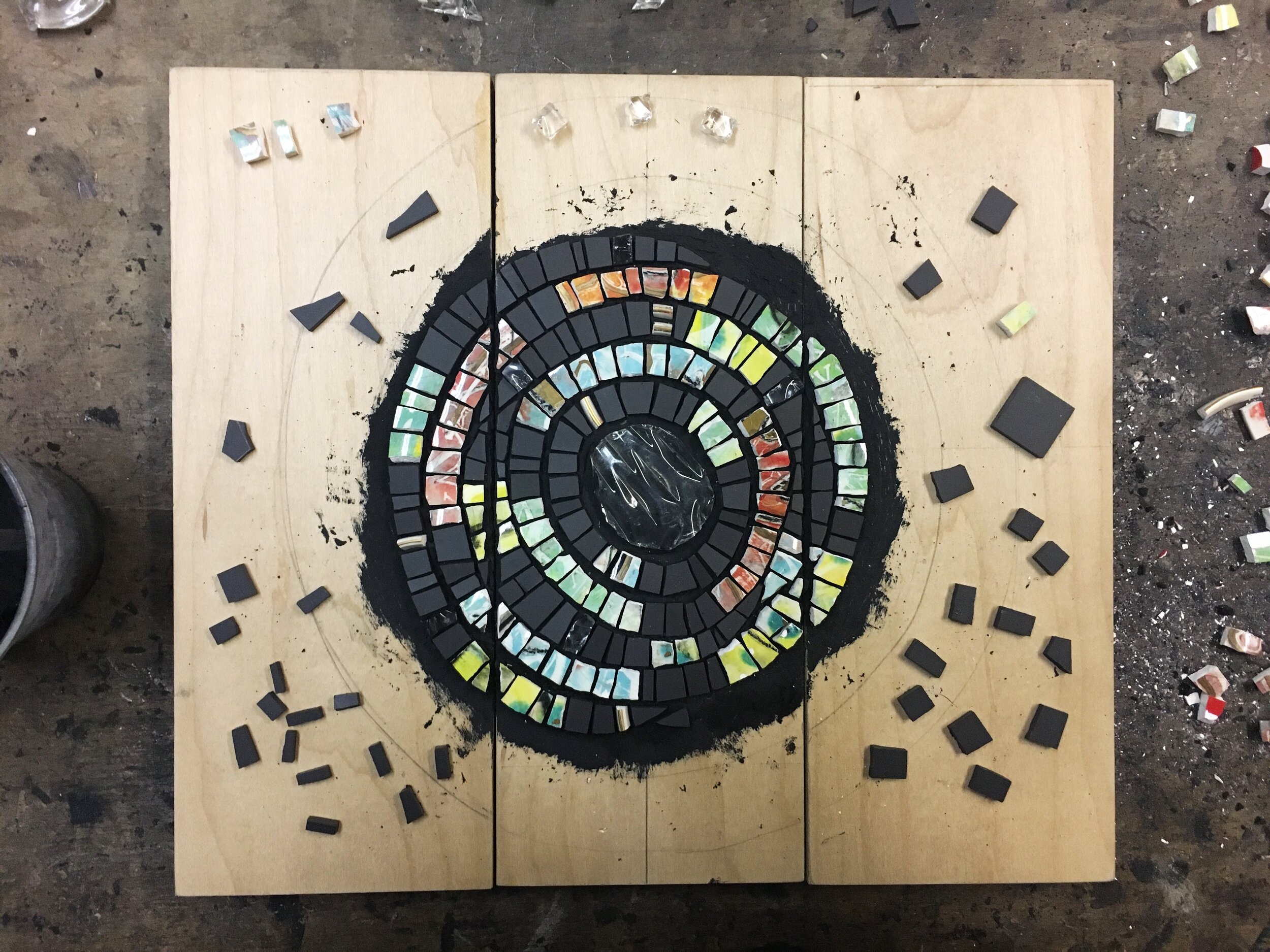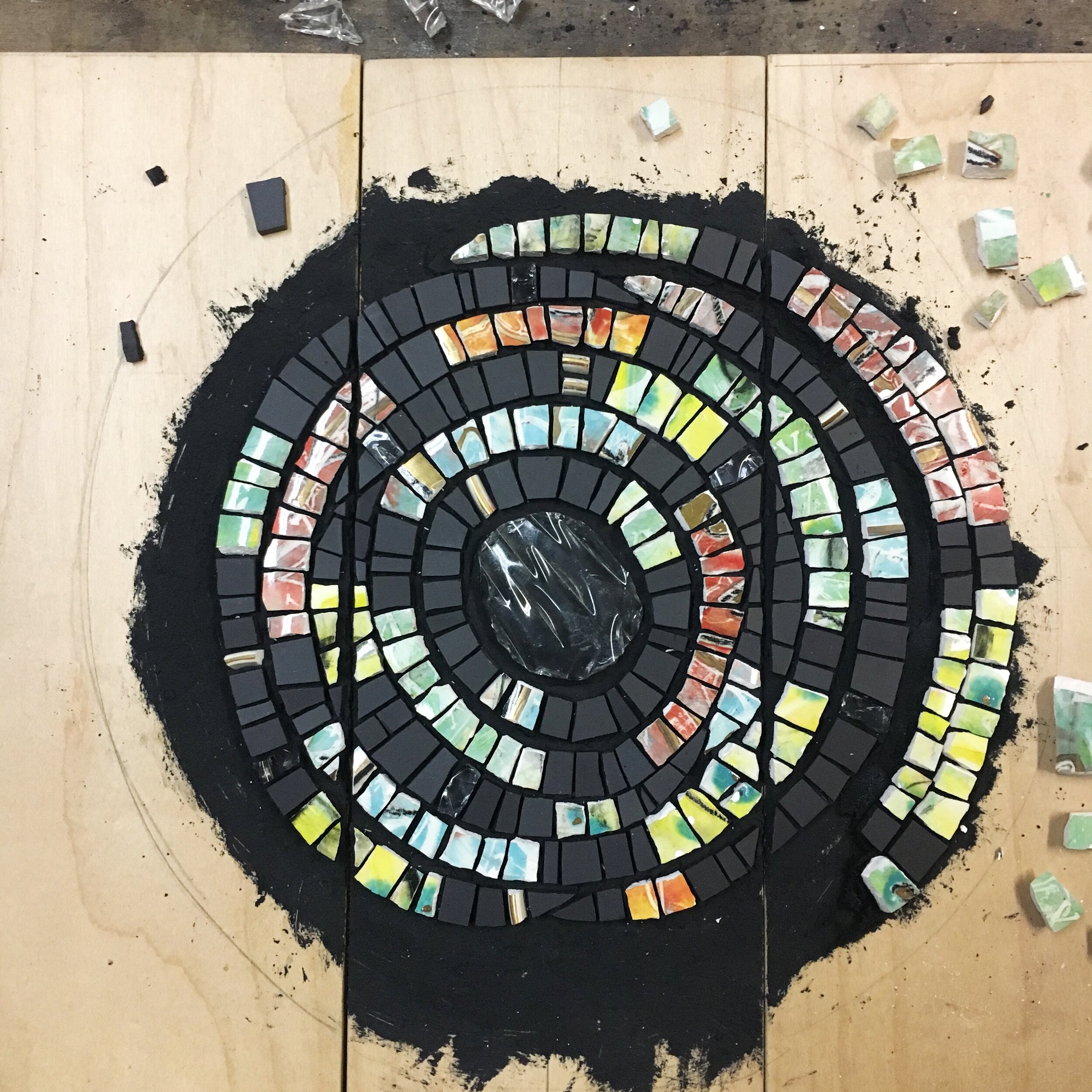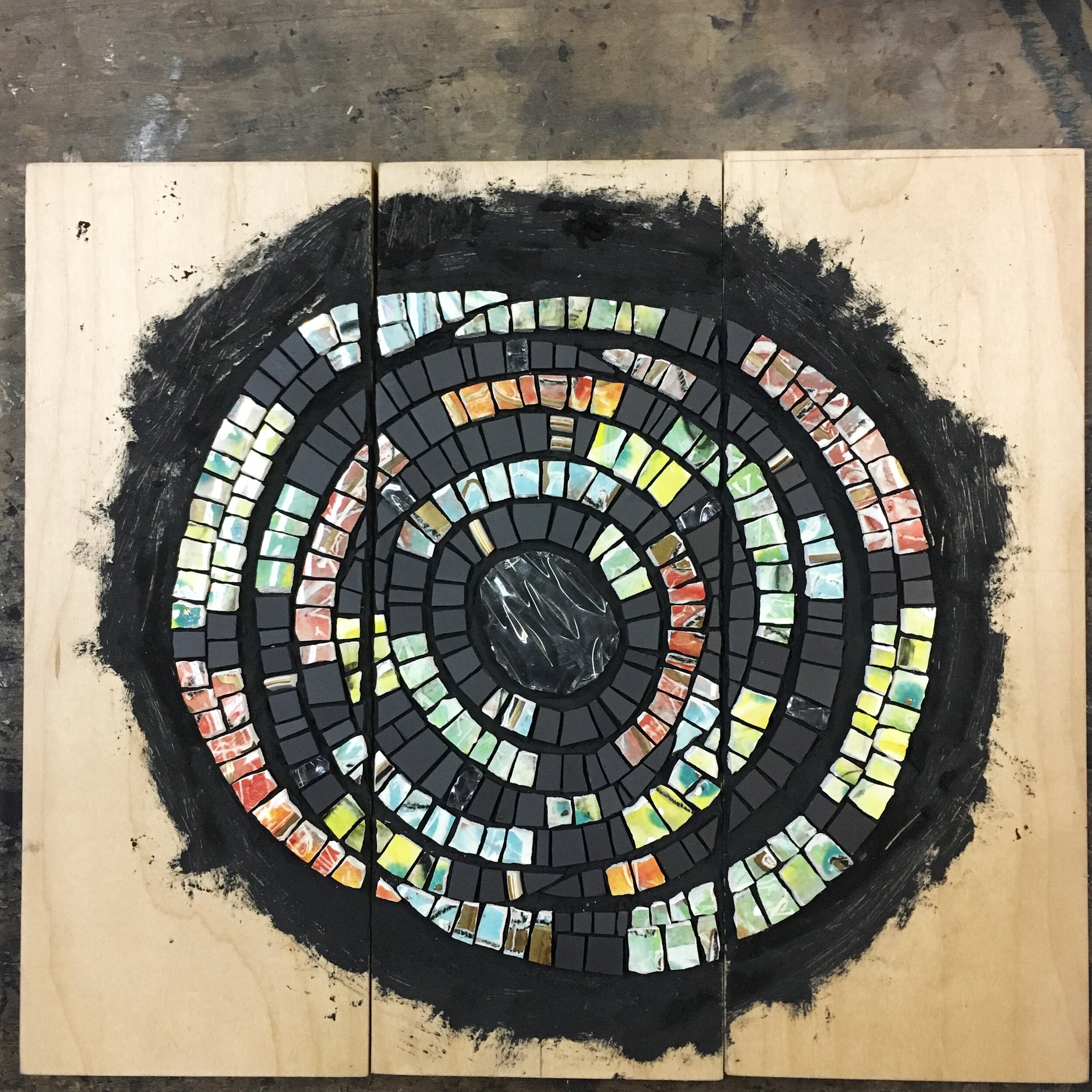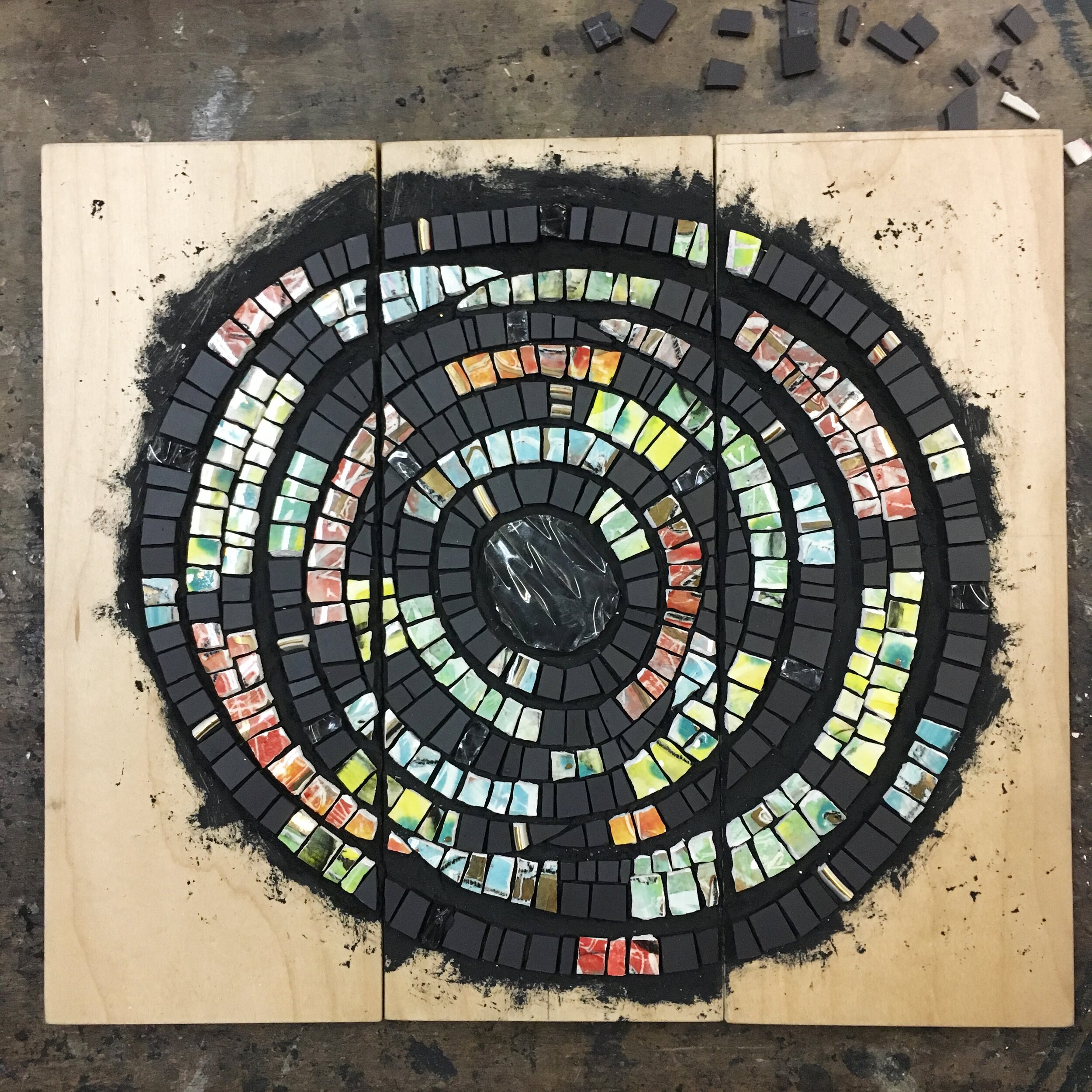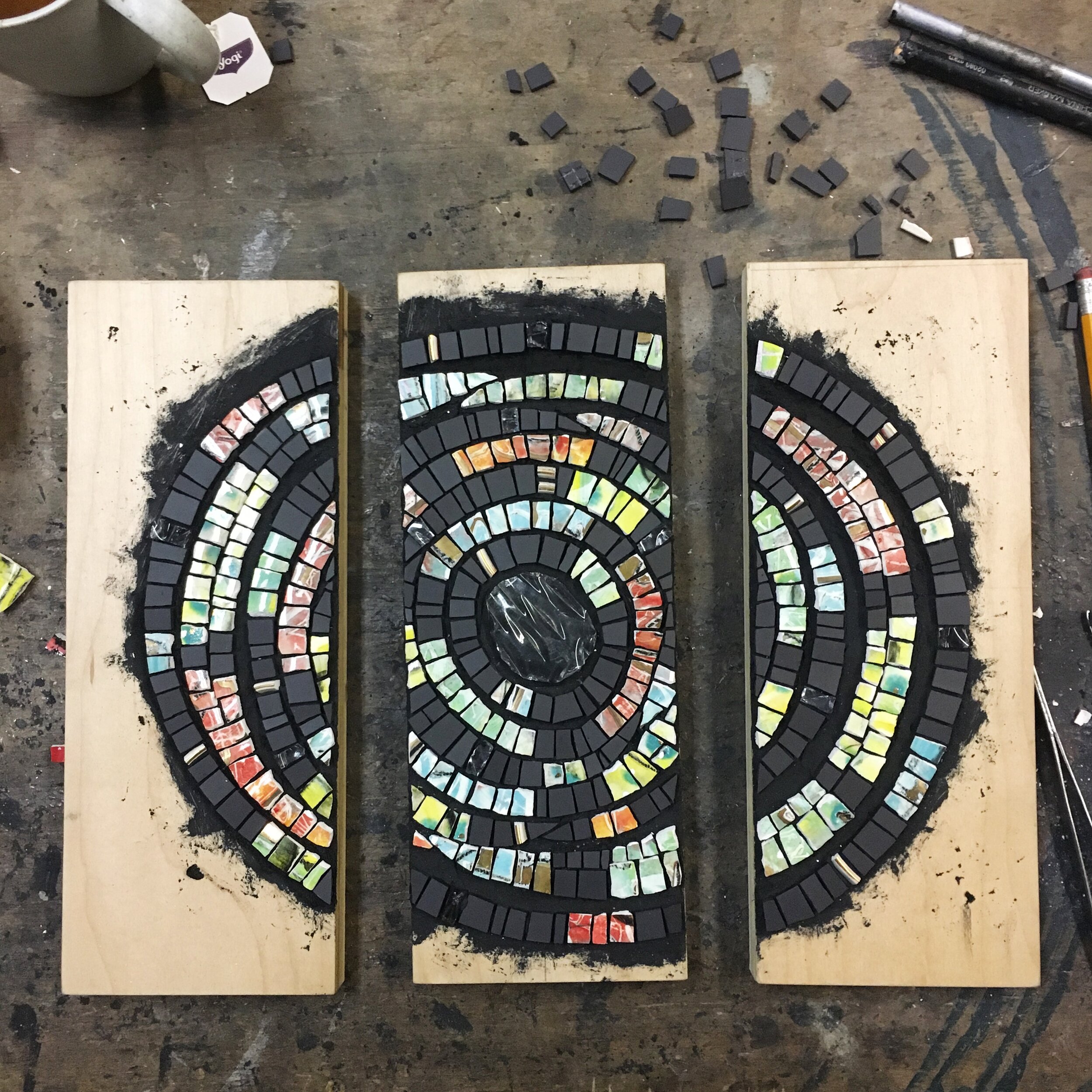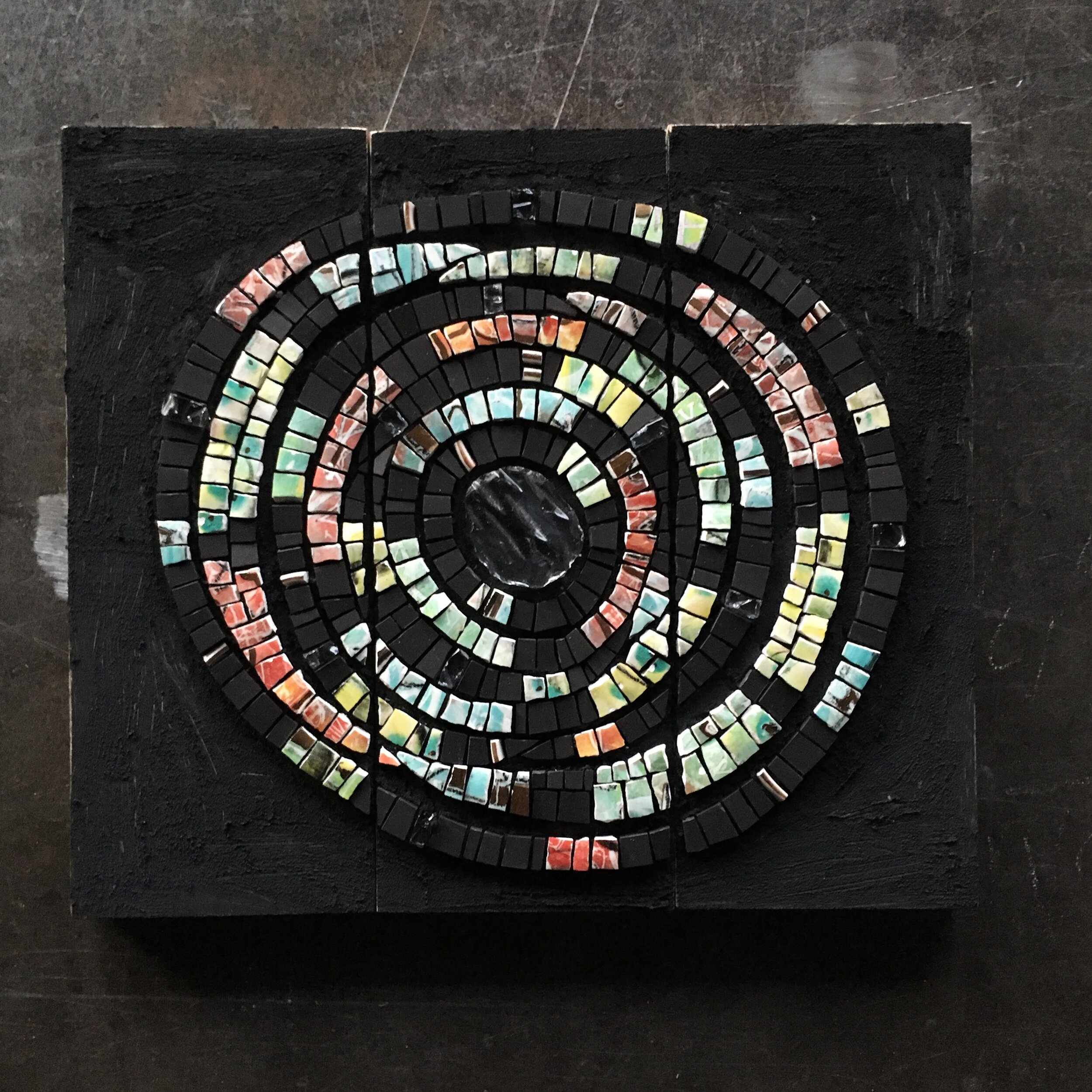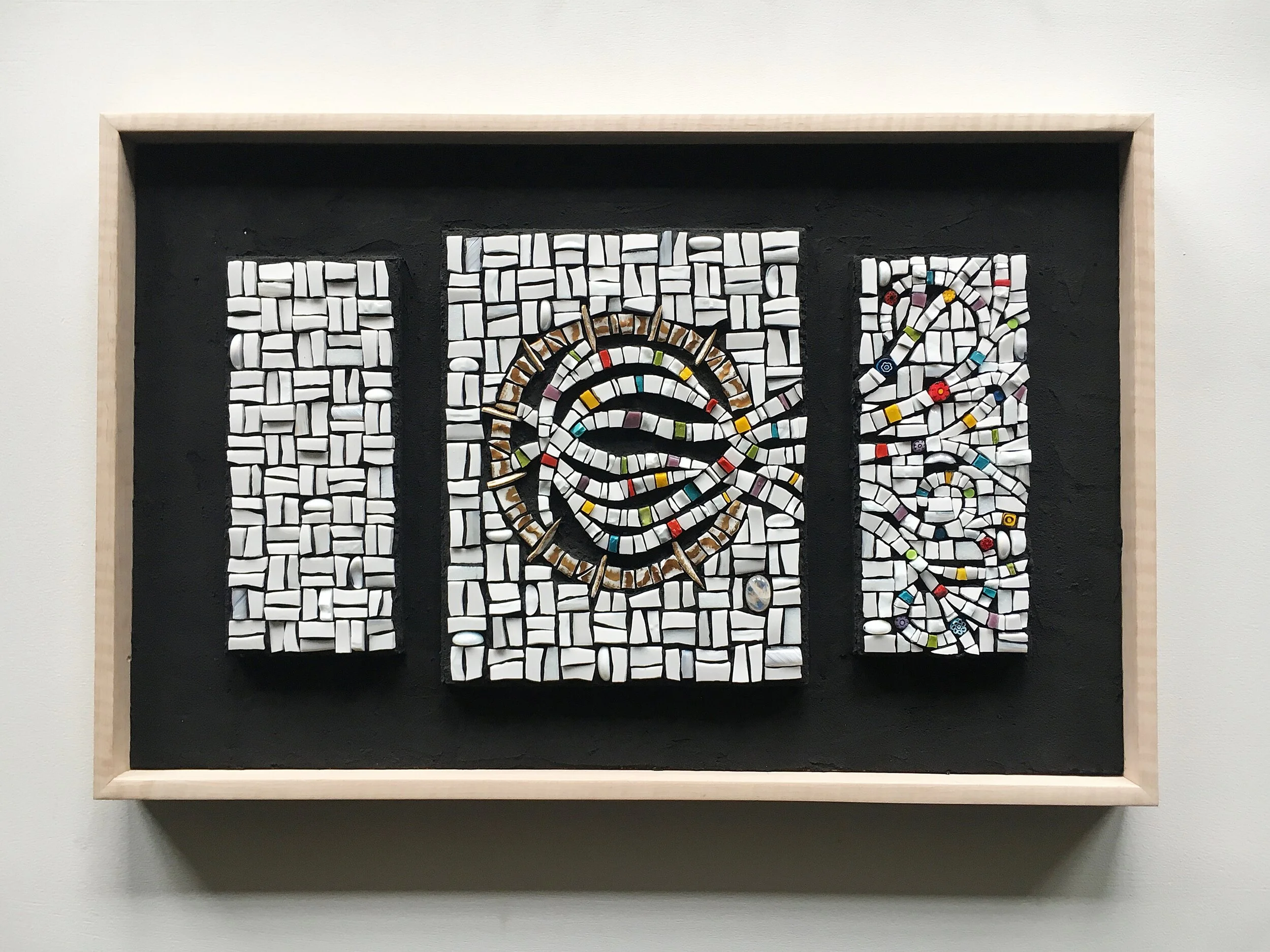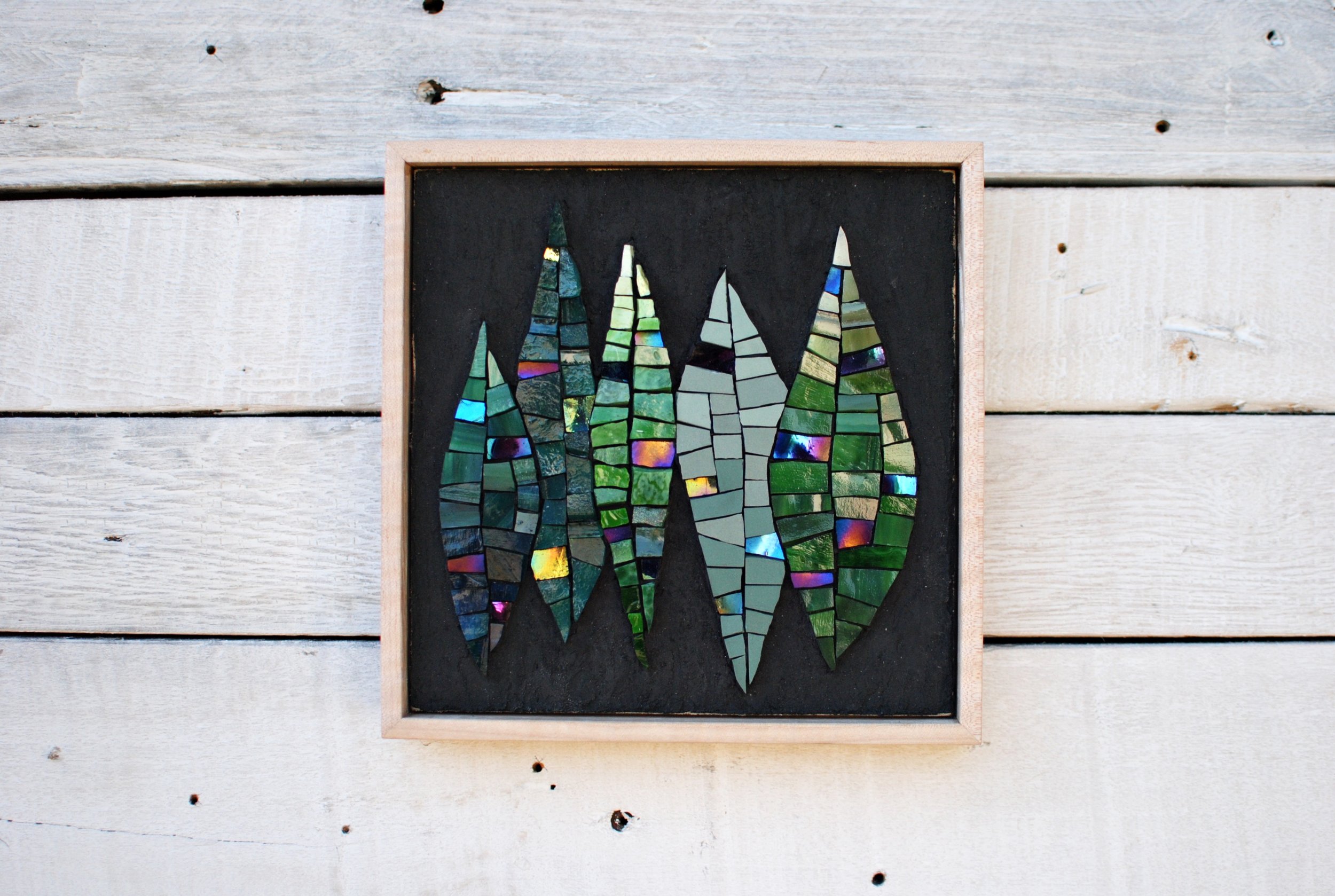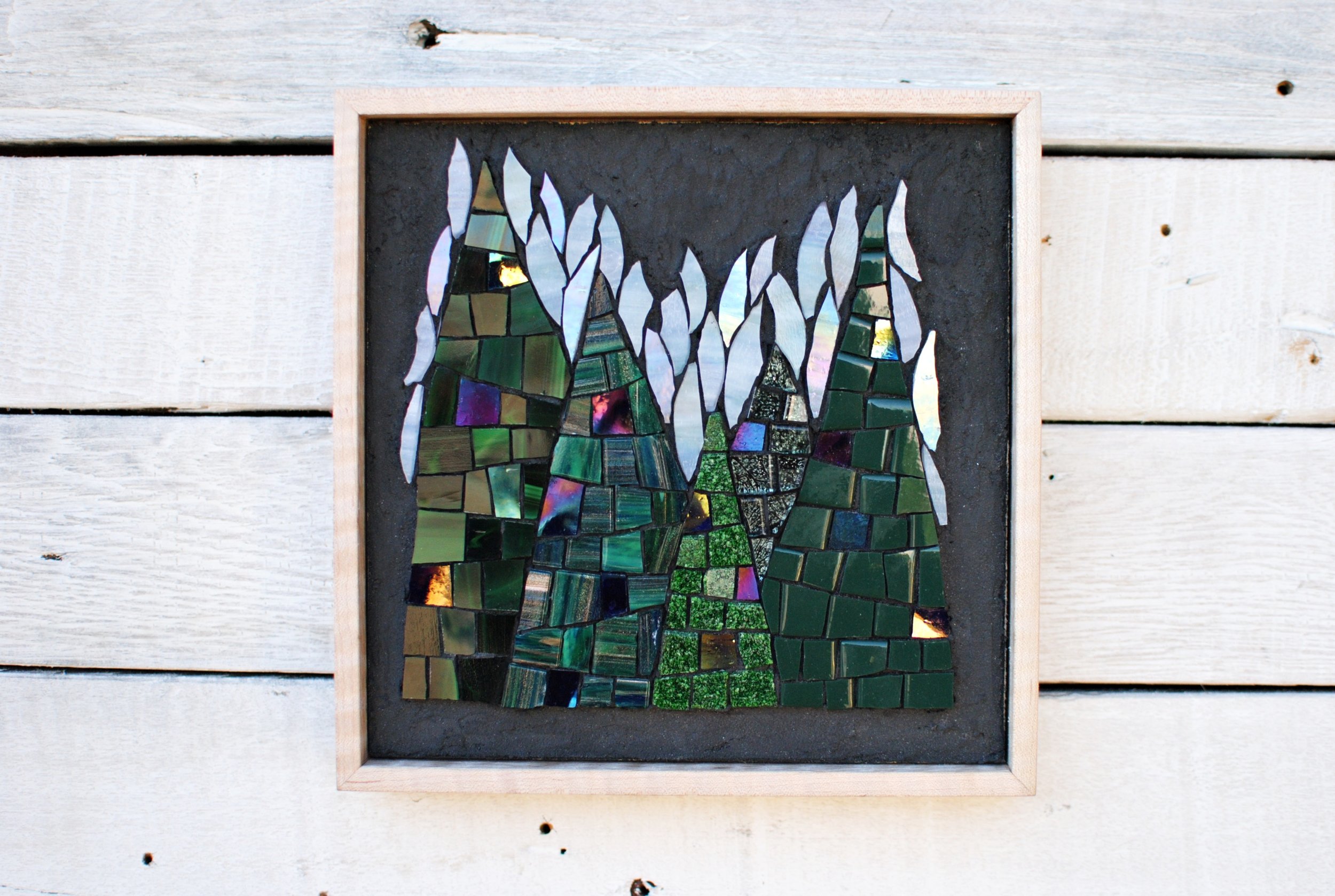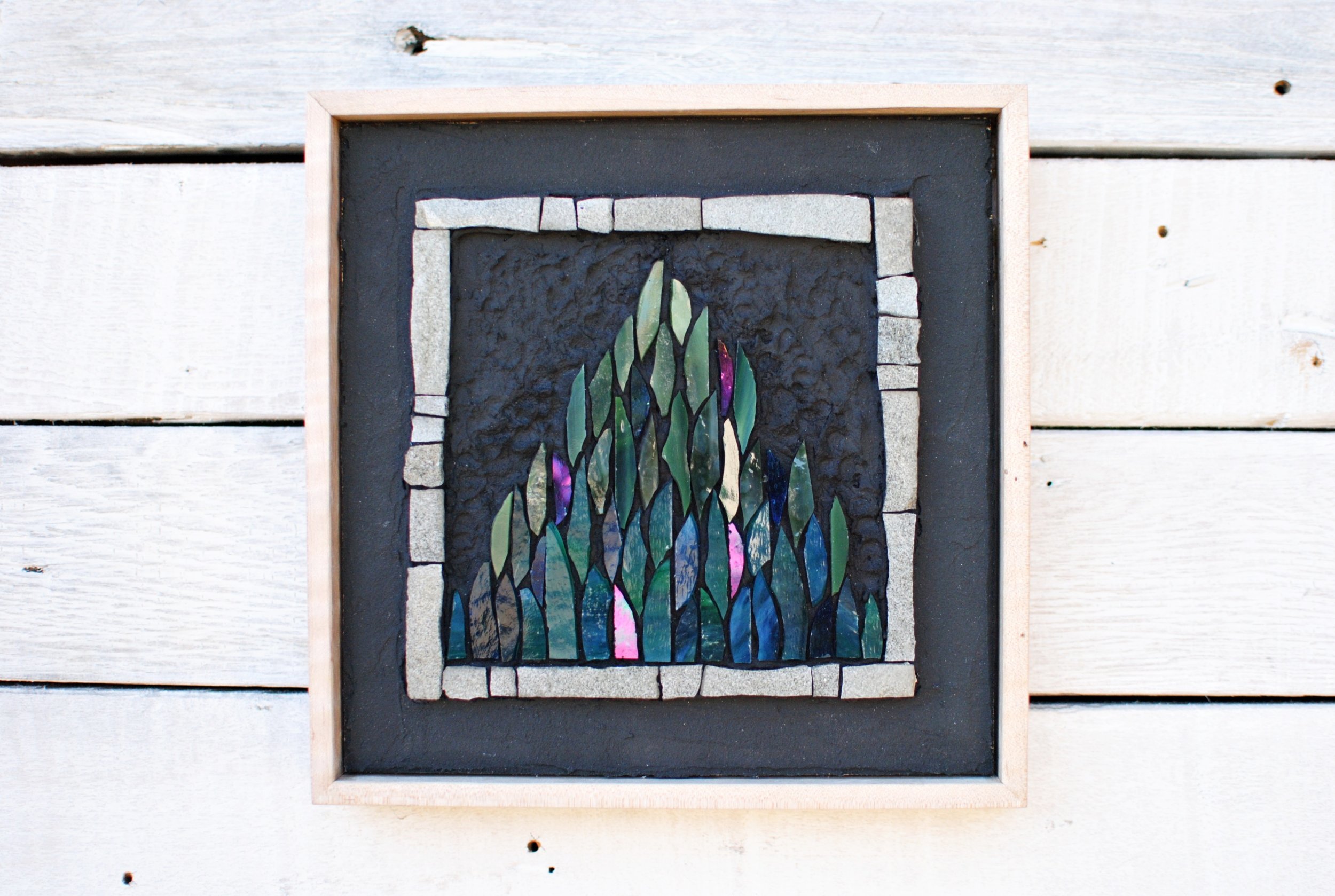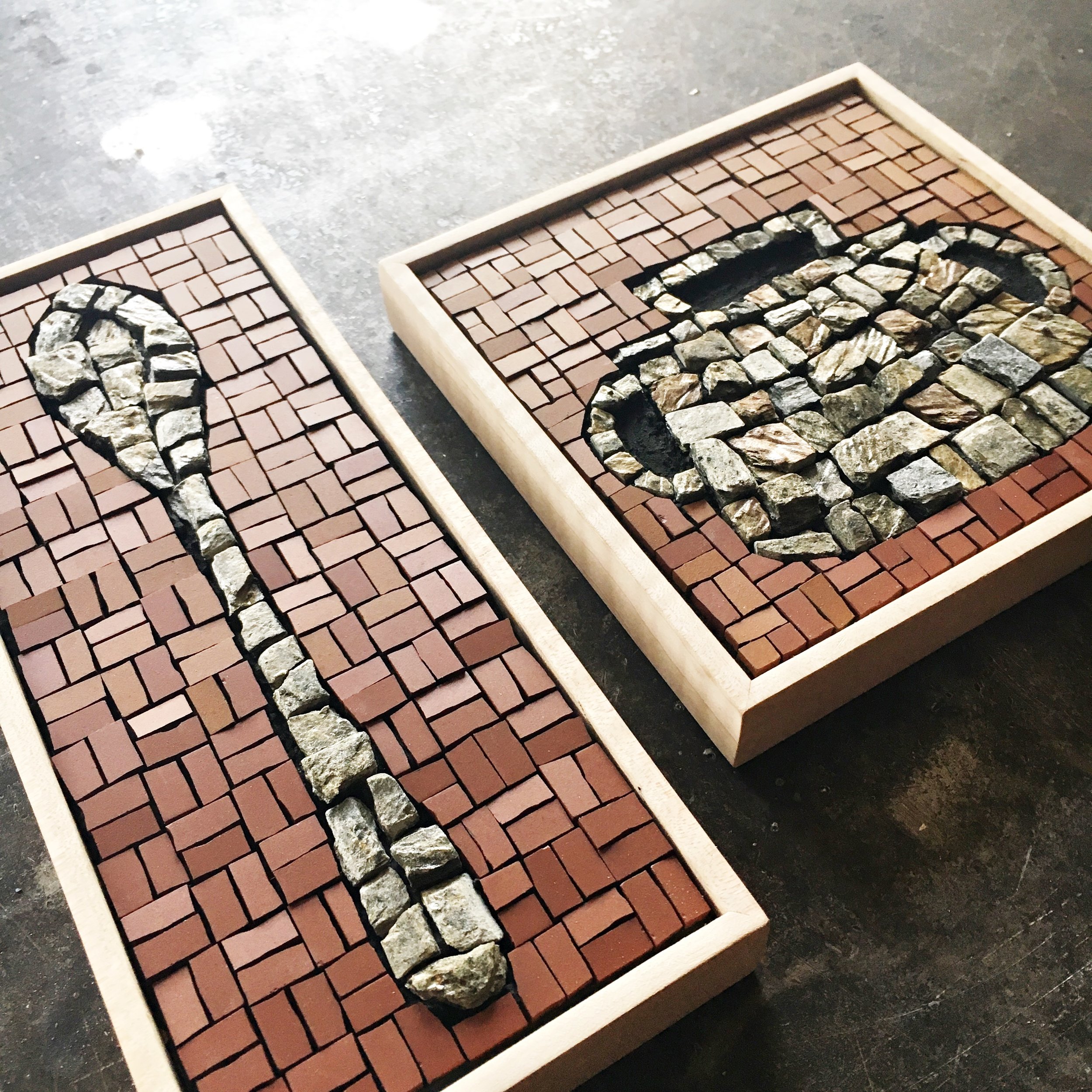"Envisioning Change" mosaics
This is a two-part mosaic series Johannah created as part of an effort to visualize and make more tangible the idea of “change.” How do we change our culture? What happens when we change our minds? What does that process look like? What do the results look like? Specifically these pieces relate to the idea of social justice, but in a broader sense they might apply to any inner change that affects personal relationships, whether with oneself or between two or more people.
{Click smaller images to enlarge.}
The first piece is a triptych titled “Change the Pattern, Change the World: The Sacred Space of Change.” Beginning on the left with a simple, unchanging pattern, the narrative of the piece moves to the center panel. Here the pattern is interrupted by a sacred, protected space where deep, lasting change is fueled and created. In the final panel, this deep change moves out of the sacred space and into the broader outside world, disrupting and changing the established pattern.
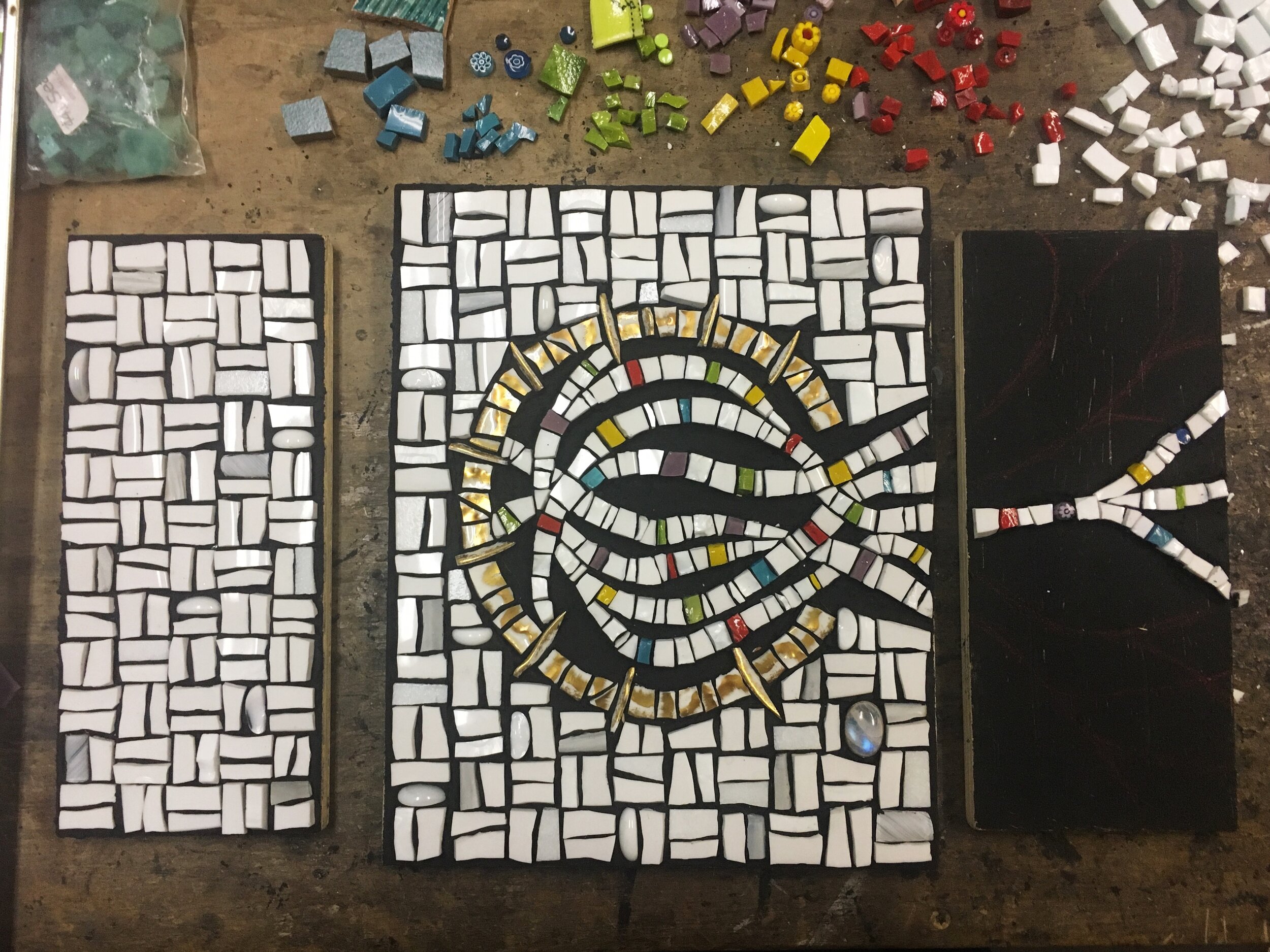
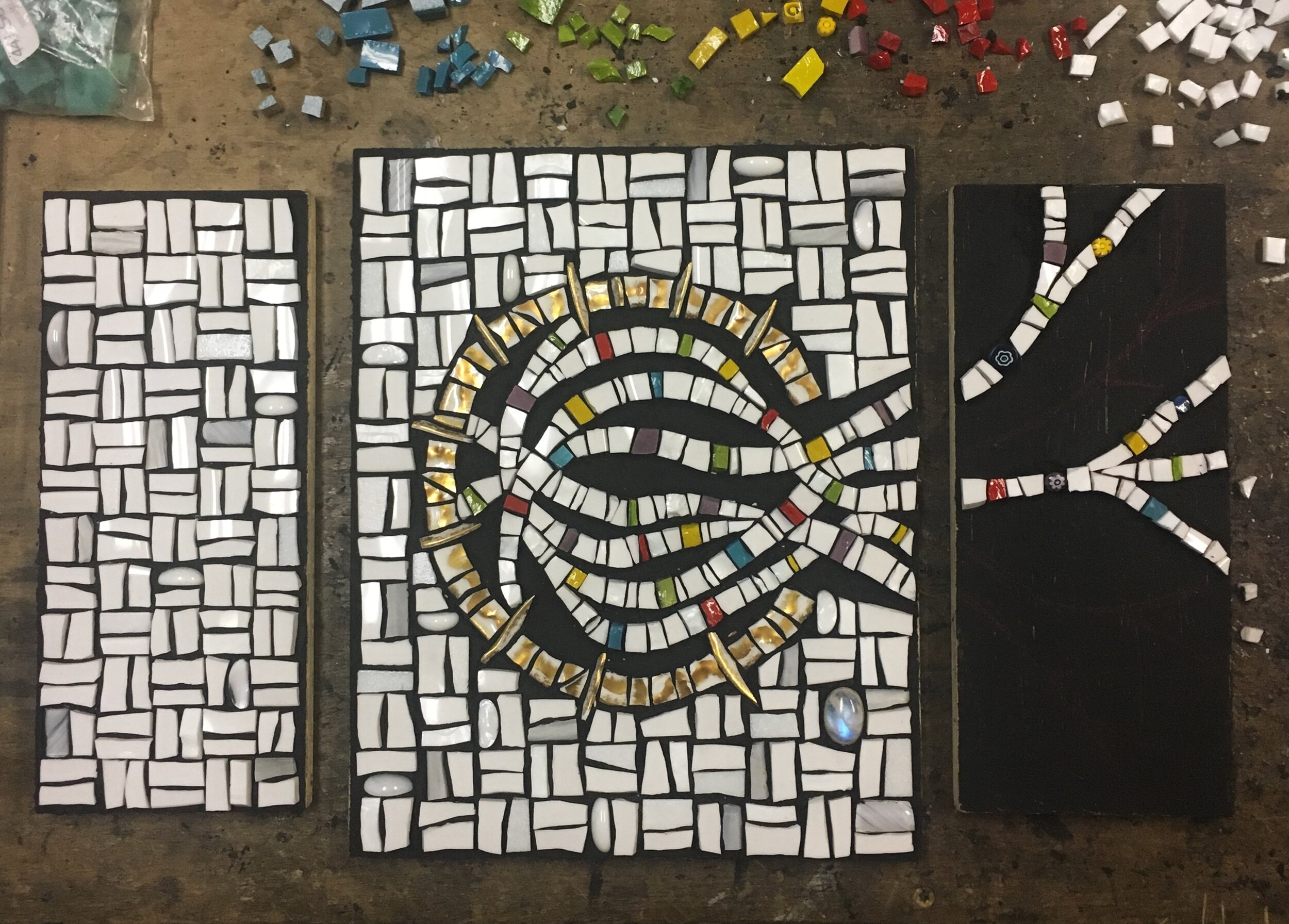
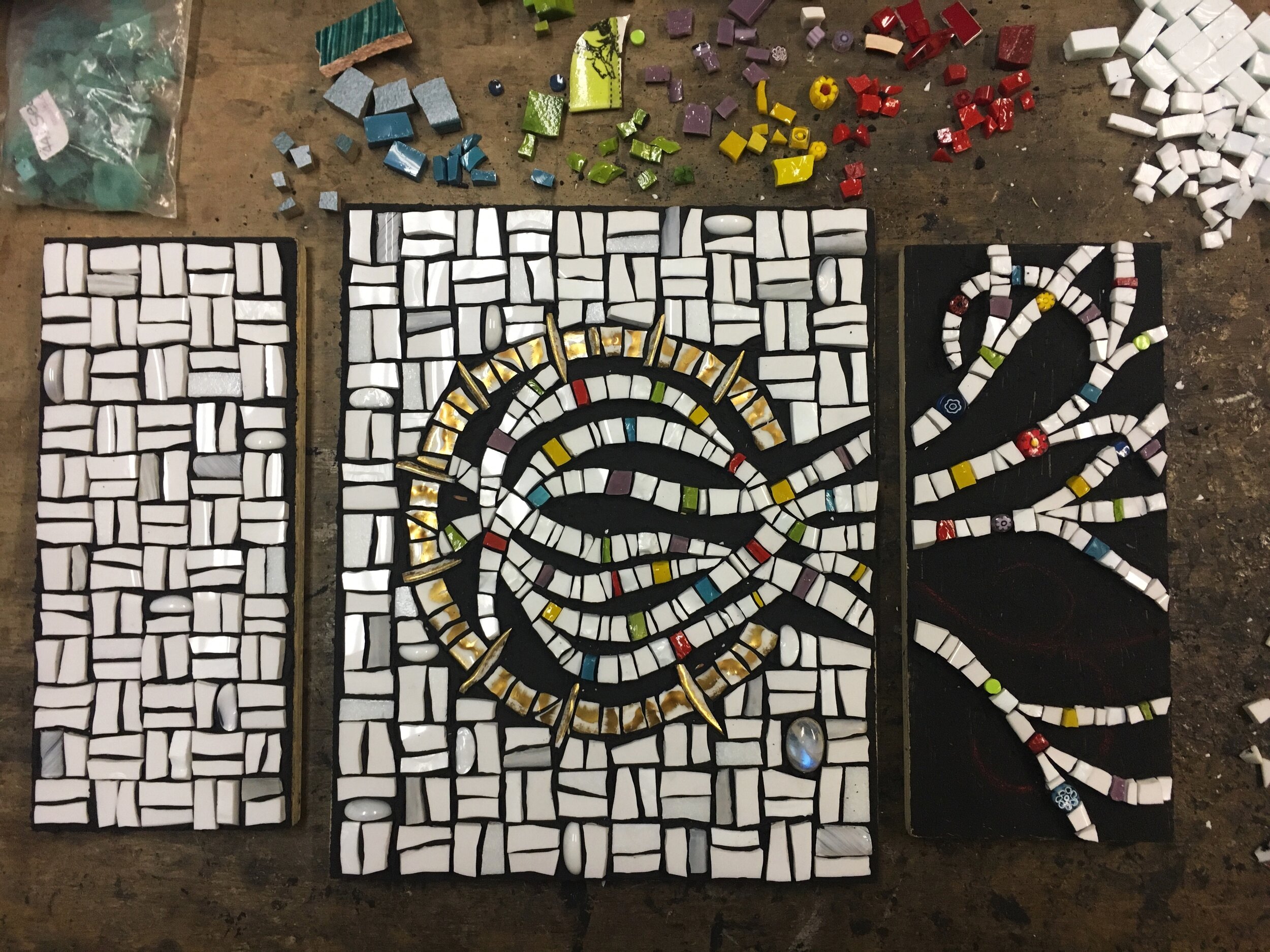
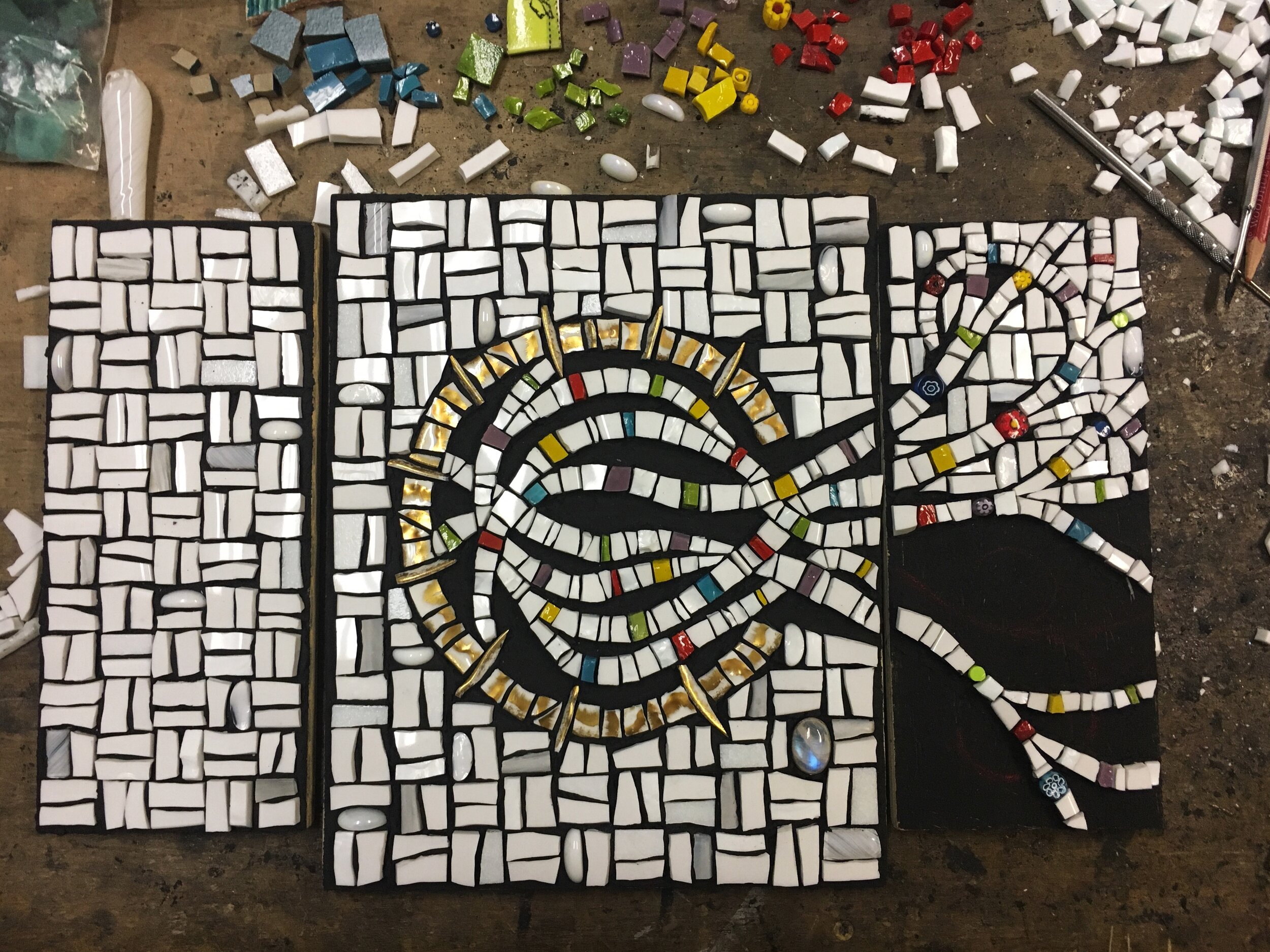
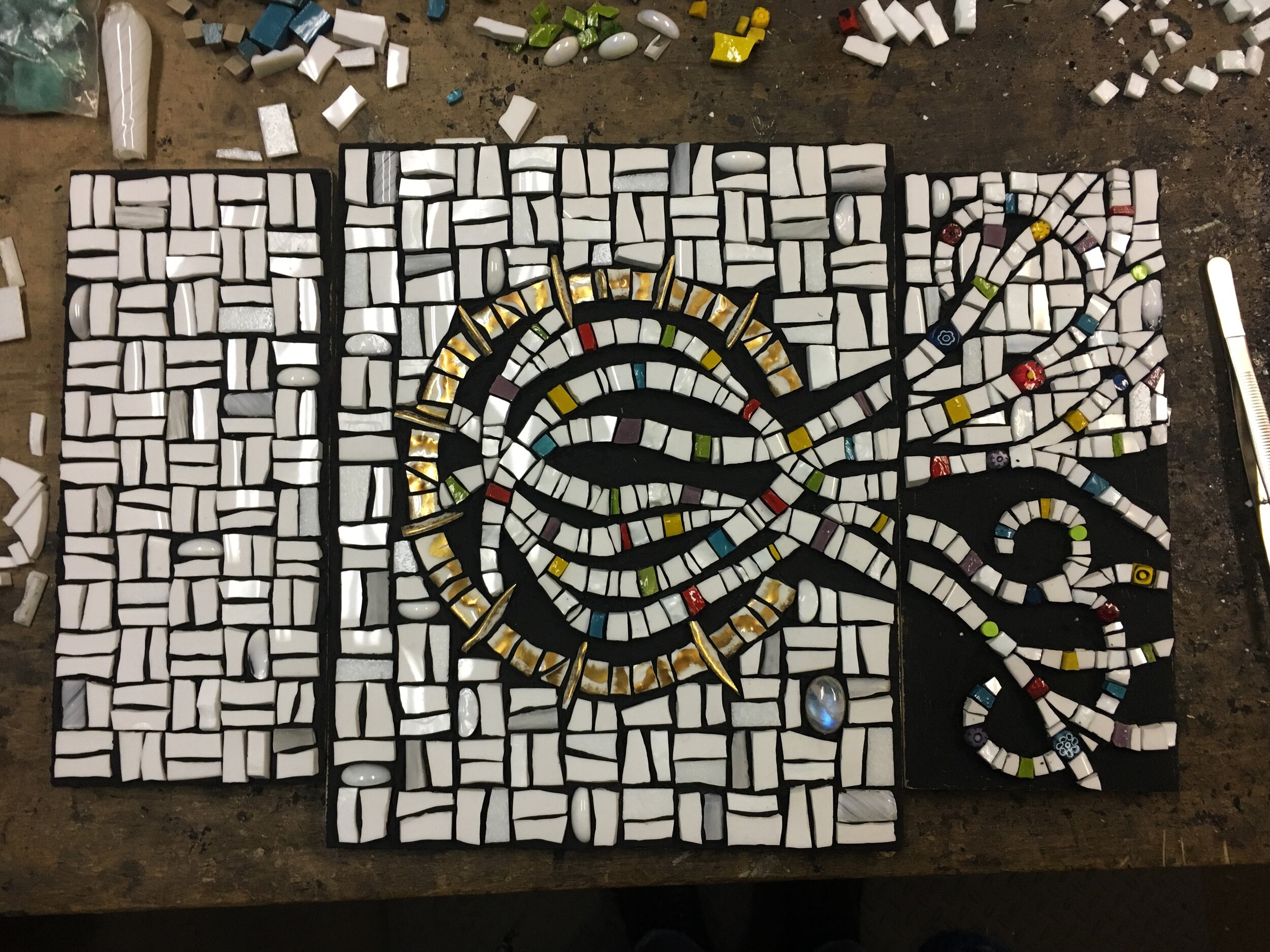
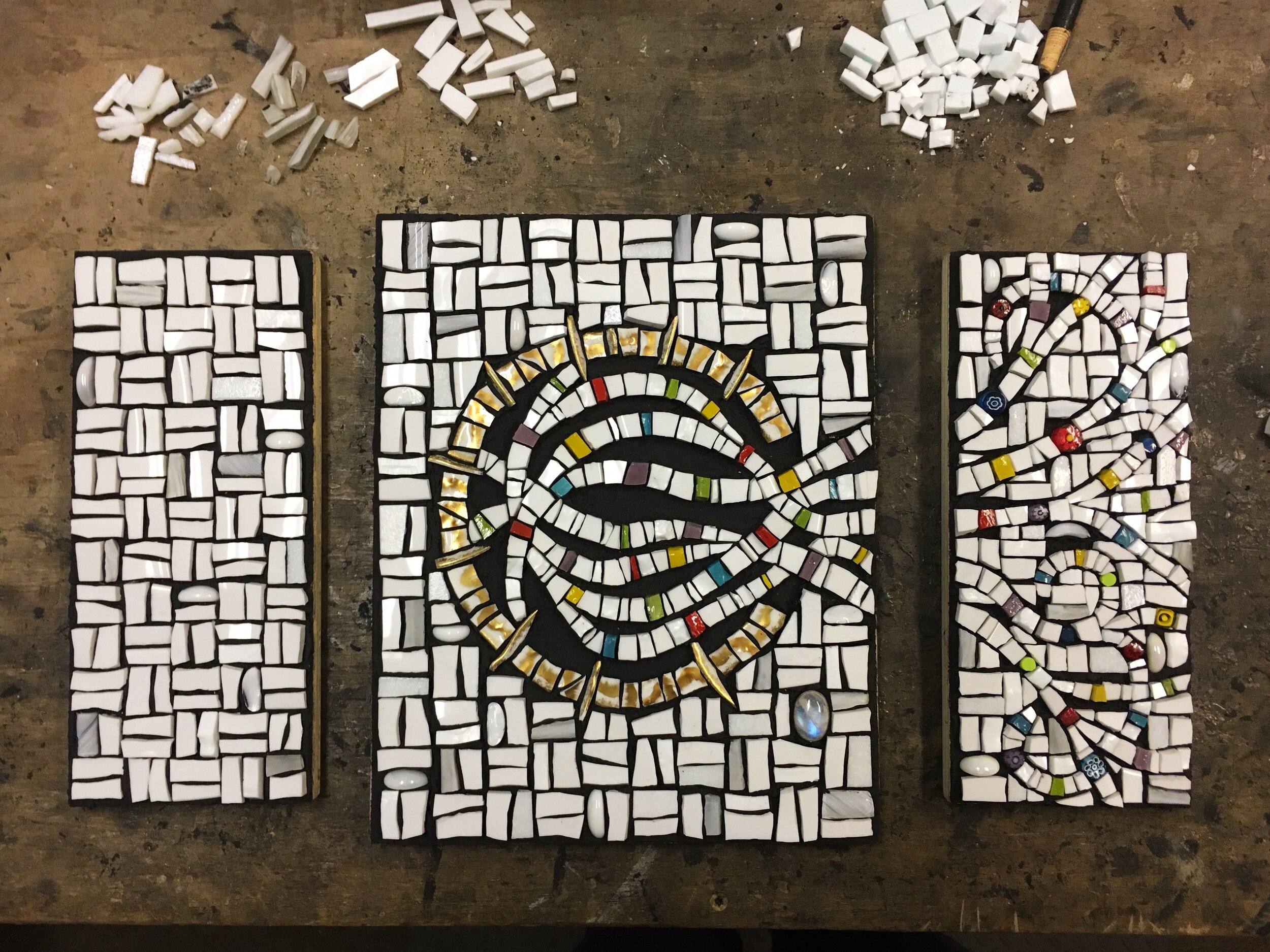
Process shots filling in the third panel above and a few of our favorite details below.
The second piece in this series about change is called “Through Diversity, We Expand.” This was inspired by the question “what value does diversity bring to our lives?” One answer to that question is that exposure to new experiences, especially new people, cultures, and worldviews causes us to grow as individuals and broaden our understanding of the world. And just as our bodies are composed of the elements of the universe, the lines of this artwork mimic those of our expanding universe, reflecting our personal experience in the greater universal experience.
